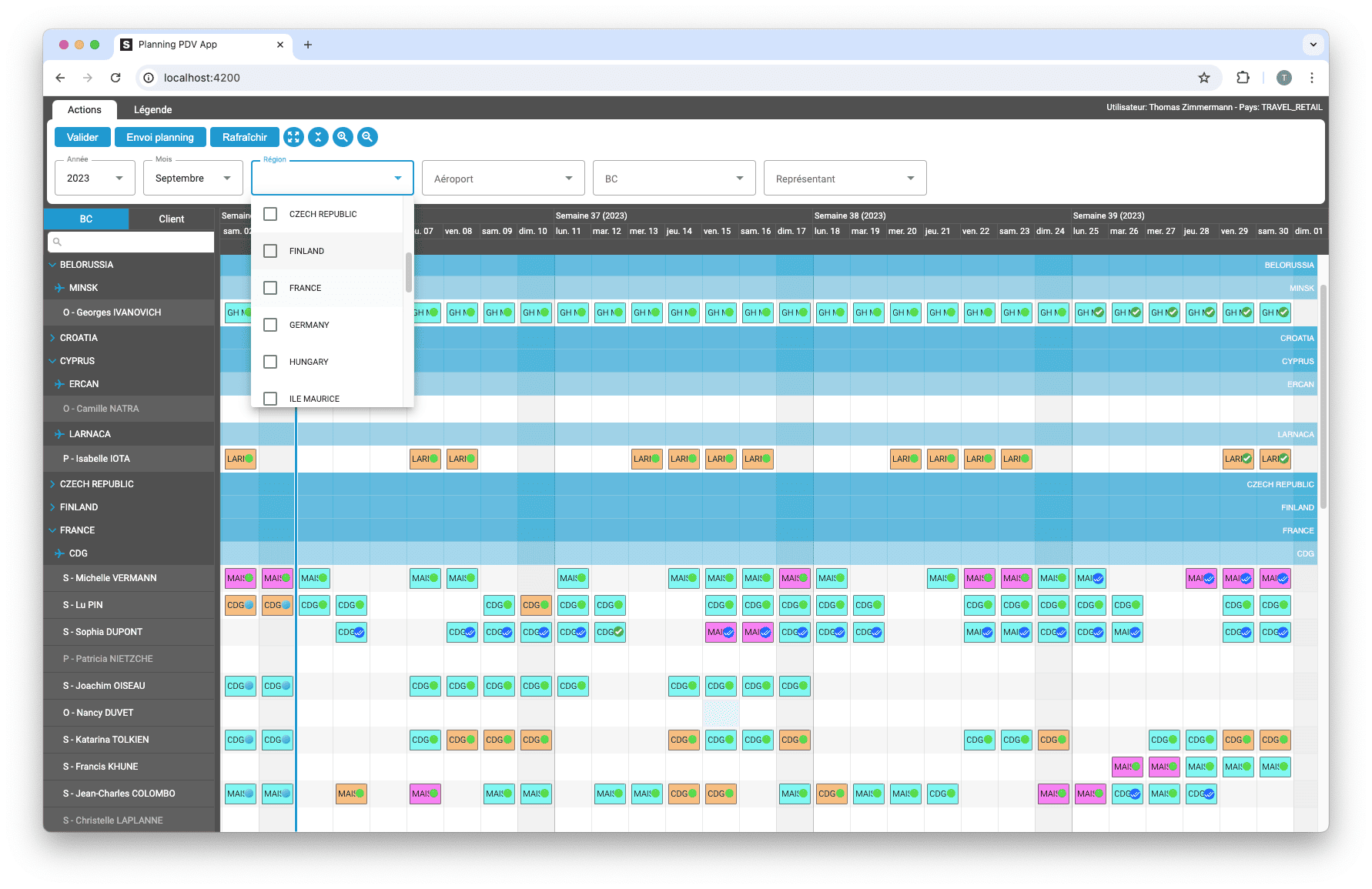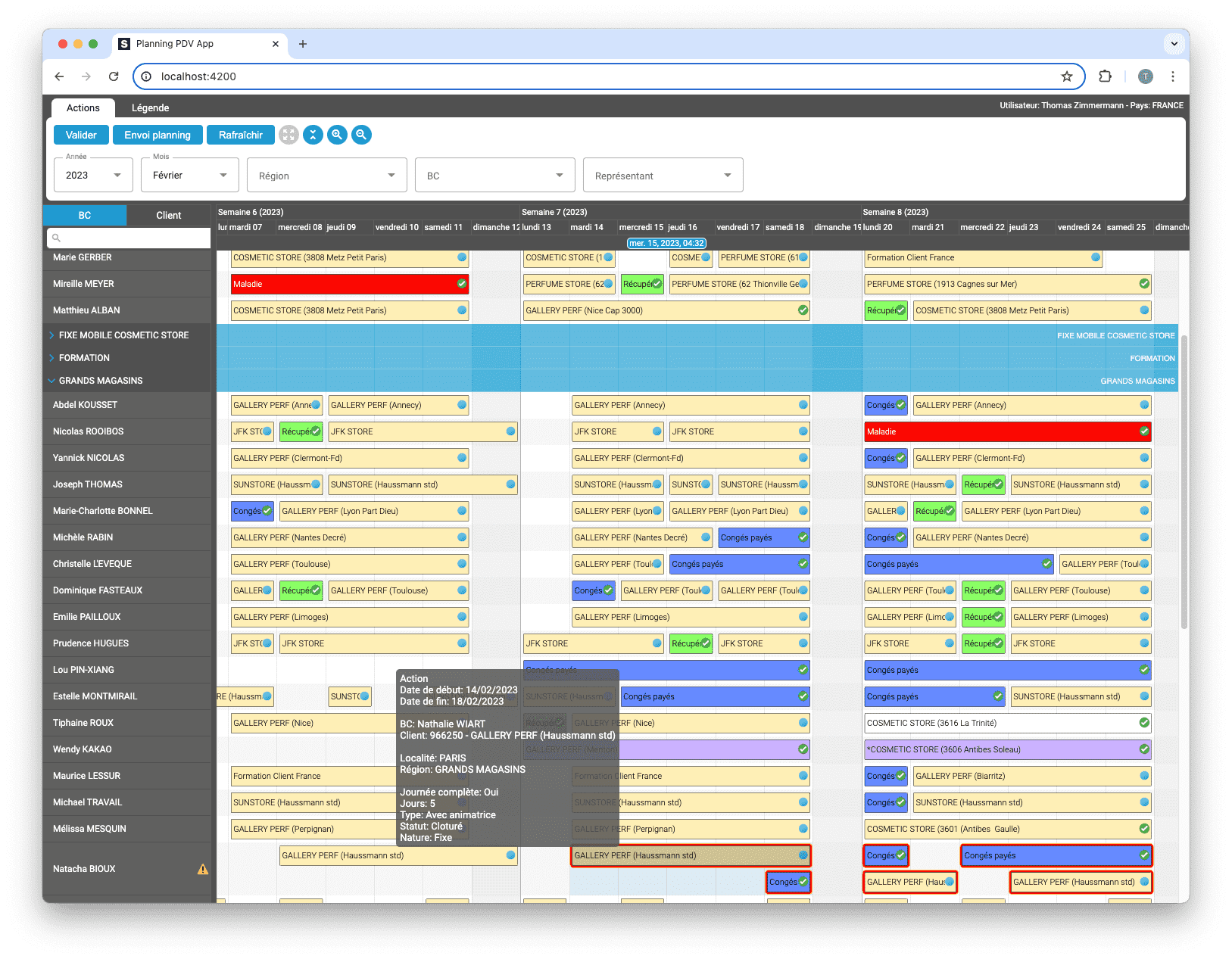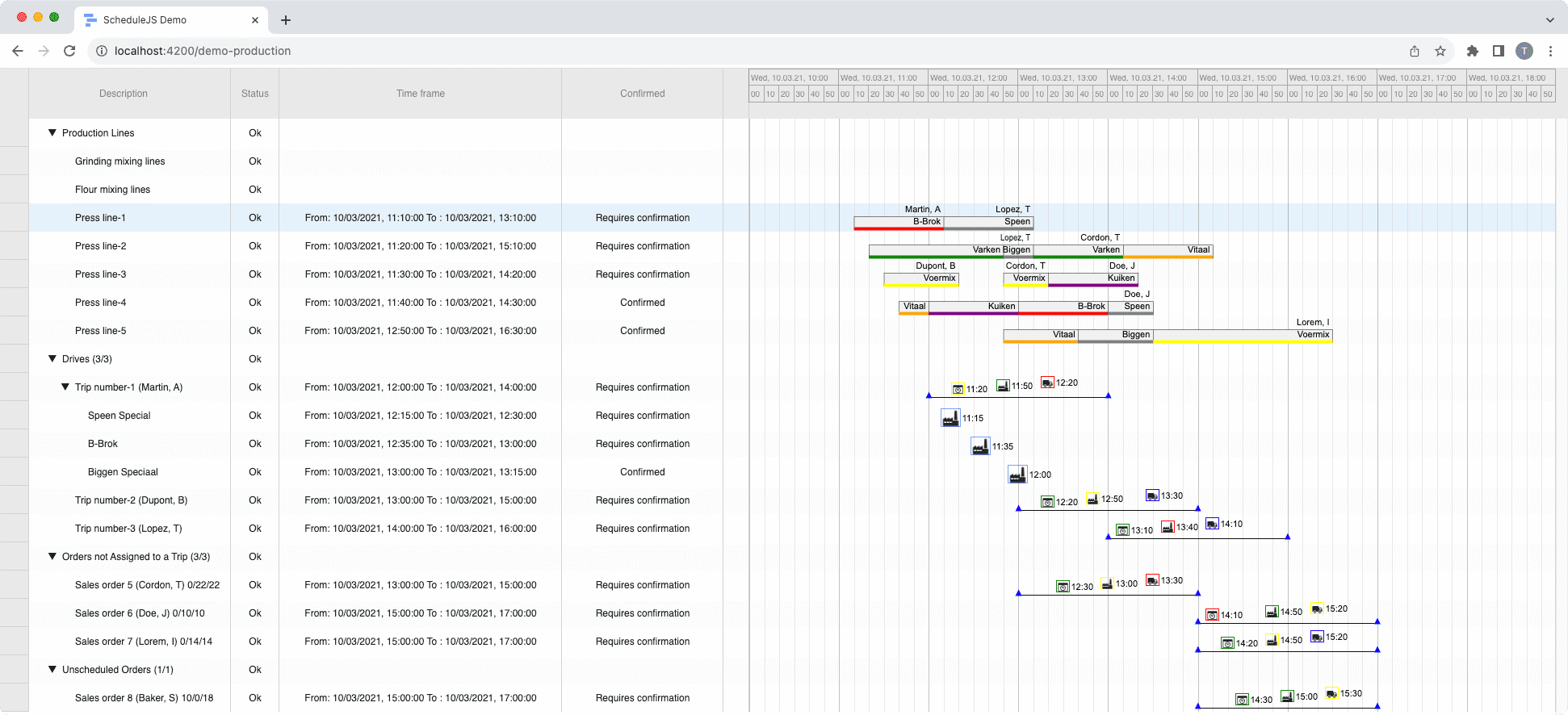ScheduleJS 1.4 release notes. A step forward towards modern Angular app building.

Angular 16 vs Angular 18: a comparison of new features
May 15th, 2025 - 5-6 minutes read
Introduction
The Angular framework, developed by Google, is evolving rapidly at a pace of about two releases per year. Each update brings new features, optimizations, and paradigm shifts. Among them, Angular 16 (May 2023) marked a major milestone by introducing signals, a new approach to reactivity that changed the way state is managed in applications. One year later, Angular 18 (May 2024) continued this momentum by consolidating these advances while opening up new possibilities, particularly with the Zoneless mode.
Angular 16: The Revolution of Signals
Before Angular 16, reactivity in Angular was mainly based on RxJS and Observables. While powerful, this model required a certain level of expertise and introduced additional complexity, especially when dealing with simple state management. Angular 16 introduced signals, a more straightforward and intuitive reactive API that makes it possible to track and update values seamlessly.
A signal is a reactive value that can be read like a function and updated through dedicated methods (set, update). For example, a counter can be written in a much more concise way:
import { Component, signal } from '@angular/core';
@Component({
selector: 'app-counter',
template: `
<h2>Compteur Angular 16 : {{ count() }}</h2>
<button (click)="increment()">Incrémenter</button>
`
})
export class CounterComponent {
count = signal(0);
increment() {
this.count.update(v => v + 1);
}
}With Angular 16, signals were still in developer preview, but they already represented a significant breakthrough. They simplified local state management, improved performance by reducing the number of change detection cycles, and paved the way for finer-grained reactivity in Angular.
Angular 18: Optimization and Control with Zoneless
Angular 18 did more than just consolidate existing features. It introduced a particularly ambitious innovation: the Zoneless mode. Since the very beginning, Angular has relied on Zone.js to intercept events and trigger UI updates. This approach is robust, but it can become costly in terms of performance, especially in large-scale applications.
With Angular 18, it is now possible to run Angular without Zone.js. In Zoneless mode, it’s the developer who explicitly triggers change detection. This provides greater control and reduces the number of unnecessary cycles.
import { ApplicationRef, Component, signal } from '@angular/core';
@Component({
selector: 'app-counter18',
template: `
<h2>Compteur Angular 18 (Zoneless) : {{ count() }}</h2>
<button (click)="increment()">+1</button>
`
})
export class Counter18 {
count = signal(0);
constructor(private appRef: ApplicationRef) {}
increment() {
this.count.update(v => v + 1);
this.appRef.tick(); // déclenche la détection de changements
}
}This approach helps avoid the constant triggering of rendering cycles and improves the scalability of applications. For now, the Zoneless mode is still experimental, but it offers a concrete glimpse into the future of Angular.
Zone Coalescing: An Automatic Optimization
Another advancement in Angular 18 is zone coalescing, which is now enabled by default. This optimization groups multiple events into a single change detection cycle. For example, if a user quickly types text into several fields, Angular won’t recalculate the UI after each keystroke but will instead combine the changes.
@Component({
selector: 'app-form',
template: `
<input [(ngModel)]="firstName" placeholder="Prénom" />
<input [(ngModel)]="lastName" placeholder="Nom" />
<p>Nom complet : {{ firstName }} {{ lastName }}</p>
`
})
export class FormComponent {
firstName = '';
lastName = '';
}In this scenario, Angular 18 handles updates more intelligently, making the application smoother without requiring any code changes from the developer.
Async / Await and Asynchronous Handling
Angular 16 already handled asynchronous operations through Observables and the async pipe. Angular 18 goes a step further by allowing developers to use await directly in templates — but only in Zoneless mode.
@Component({
selector: 'app-user',
template: `
<ng-container *ngIf="userPromise | async as user; else loading">
<h3>{{ user.name }}</h3>
<p>{{ user.email }}</p>
</ng-container>
<ng-template #loading>Chargement...</ng-template>
`
})
export class UserComponent {
userPromise = this.fetchUser();
async fetchUser() {
const res = await fetch('https://jsonplaceholder.typicode.com/users/1');
return res.json();
}
}This evolution makes writing asynchronous code more natural and closer to modern JavaScript, improving readability and reducing the need for complex solutions to handle promises.
Compatibility with TypeScript
Angular 16 was based on TypeScript 5.2, while Angular 18 integrates TypeScript 5.4. This upgrade brings:
-
Stricter typing
-
Improved autocompletion in IDEs
-
Faster compilation performance
These improvements directly benefit developers, providing a more modern and safer environment for their projects.
Angular 16 vs Angular 18: Comparison Table
| Feature | Angular 16 | Angular 18 |
|---|---|---|
| Signals | Introduced in preview | Still present, better integrated, stabilization coming soon |
| Zoneless | Not available | Developer preview, more control and performance |
| Zone Coalescing | Optional | Enabled by default |
| Async / Await | Through async pipes only | Direct support in templates (Zoneless mode) |
| TypeScript | v5.2 | v5.4 |
| Performance | Gains thanks to signals | Automatic optimizations + Zoneless |
| Developer Experience | New reactivity | More control, enhanced diagnostics |
Conclusion
The comparison between Angular 16 and Angular 18 highlights two complementary steps in the framework’s evolution. Angular 16 introduced signals, a major innovation that transformed the way reactivity is handled. Angular 18, on the other hand, did not aim to revolutionize the API but rather to optimize its internal workings and prepare for the future with Zoneless mode and zone coalescing enabled by default.
In summary:
-
Angular 16 opened a new era with signals.
-
Angular 18 strengthened performance and gave developers more control over the rendering cycle.
Migrating to Angular 18 therefore allows teams to benefit from automatic optimizations, remain compatible with the latest TypeScript advancements, and most importantly, prepare projects for the major changes that will stabilize in Angular 20.
More implementation-related articles
Angular 16 vs Angular 18 comparison: discover what's new in Angular, the arrival of signals, Zoneless mode, zone coalescing, and their impact on your projects.
Discover the Angular Rome Conference: workshops, domain-driven design, signals, state management, micro frontends.
Discover Angular 18: zoneless mode, zone coalescing, native await, and TypeScript 5.4 compatibility.
The TOP 3 JavaScript Gantt chart. Discover their features, advantages, and disadvantages to choose the best tool for your project.
Discover how ScheduleJS seamlessly integrated with Selligent CRM, enhancing scheduling efficiency for a leading beauty brand's consultants.
This article showcases the integration of a ScheduleJS component into an external Ag-Grid table, to demonstrate the flexibility of ScheduleJS.
How to synchronize multiple graphics? Learn how to reuse your ScheduleJS timeline in multiple graphics to keep them synchronized.
How to build an interactive context menu? A deep dive into ScheduleJS event handling and recommended practice to build your own context menu.
This article shows how to implement dynamic rendering depending on the current zoom-level of the graphics.











